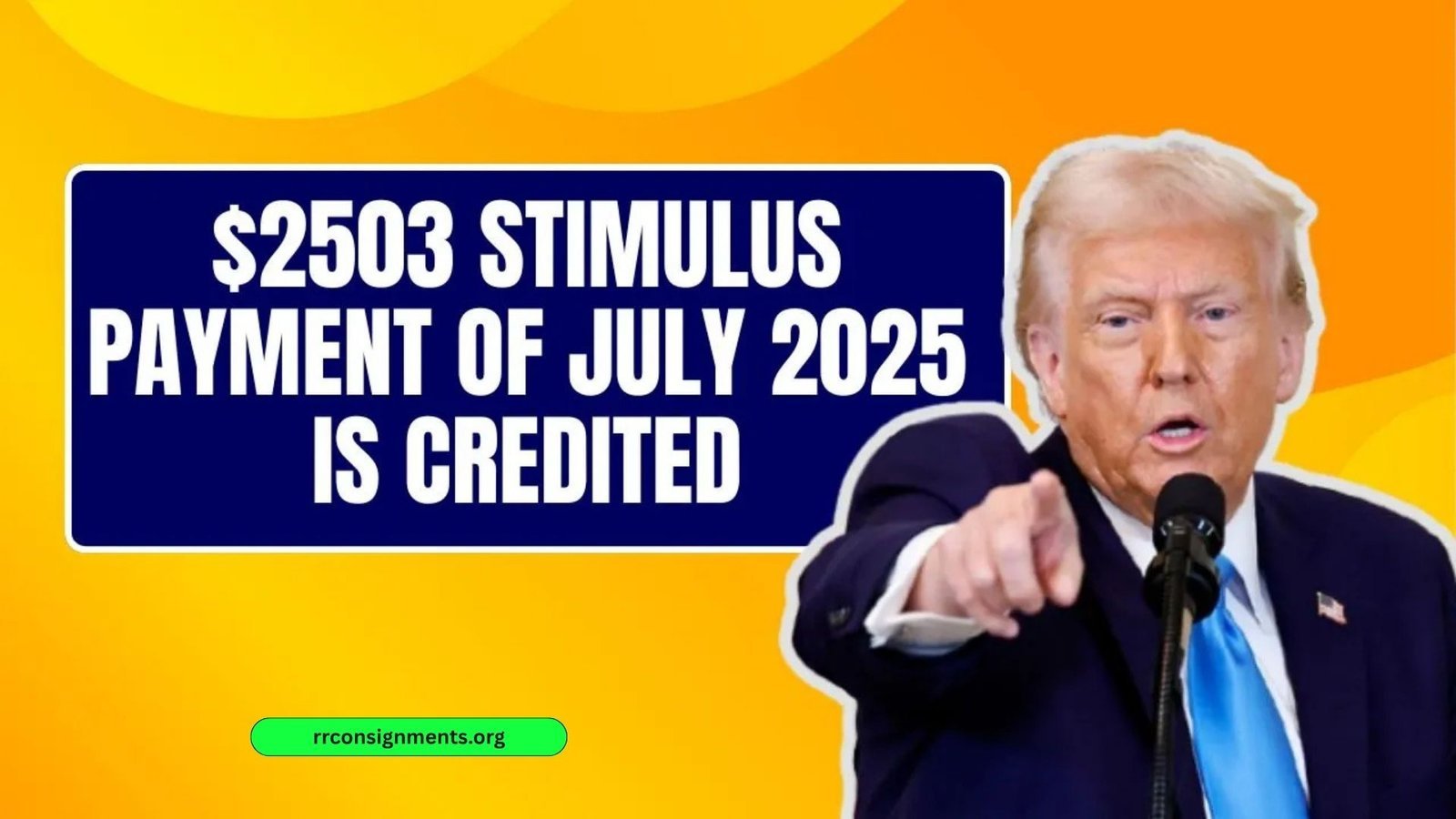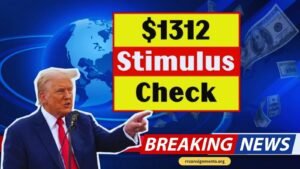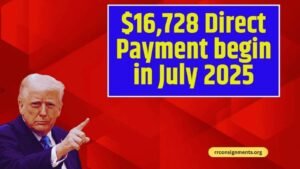Rumors about a $2,503 stimulus payment hitting bank accounts in July 2025 have spread like wildfire across social media and various websites. Many people are excited about the possibility of extra cash to help with rising costs. But is this payment real, or is it just another online rumor?
This article breaks down the truth about the $2,503 stimulus payment, who might be eligible for other real financial relief programs, and how to stay safe from scams. We’ve simplified the information to make it easy to understand and optimized it for search engines to help you find accurate answers.
What’s the Buzz About the $2,503 Stimulus Payment?
The idea of a $2,503 stimulus payment in July 2025 has gained attention, especially among those struggling with inflation and high living expenses. Social media posts and some websites claim this payment is part of a new government relief program. However, there’s no official confirmation from trusted sources like the IRS or the U.S. Department of the Treasury to support this claim.
During the COVID-19 pandemic, the U.S. government sent out stimulus checks of $1,200, $600, and $1,400 to help people manage financial challenges. These payments left a lasting impression, making people hopeful for new relief. Unfortunately, the $2,503 payment seems to be a rumor, likely sparked by misinformation or scam websites looking to attract clicks or steal personal information.
Why Are People Talking About This?
The rumor about a $2,503 stimulus payment likely started because of:
- Past Stimulus Checks: People remember the COVID-era payments and hope for similar relief.
- Economic Struggles: Rising costs for food, rent, and gas make people eager for financial help.
- Online Misinformation: Unverified blogs and social media posts spread false claims to gain attention or scam users.
Is There Any Truth to the $2,503 Payment?
As of July 2025, no official government source, including IRS.gov or the U.S. Department of the Treasury, has announced a $2,503 stimulus payment. The claim appears to be false, and you should be cautious about websites or messages promoting it.
Many of these sources are not trustworthy and may try to trick you into sharing personal details like your Social Security number or bank account information.
Instead of a $2,503 payment, there are real financial relief programs available in 2025 that you might qualify for. These include federal tax credits and state-specific programs designed to help with rising costs.
Real Financial Relief Programs in 2025
While the $2,503 stimulus payment is not real, here are some actual programs offering financial support:
| Program | Details | Eligibility | Payment Amount |
|---|---|---|---|
| Recovery Rebate Credit | For those who missed the 2021 $1,400 stimulus payment. Deadline to file was April 15, 2025. | Filed 2021 taxes, income under $75,000 (single) or $150,000 (joint), valid SSN. | Up to $1,400 per person + $1,400 per dependent |
| California Family First | Monthly payments for low-income families in Sacramento. Runs through November 2025. | Low-income families in Sacramento, specific criteria vary. | $725 per month |
| Oregon Rebates | One-time payments for low- and middle-income residents. | Oregon residents, income-based criteria. | $200–$600 |
| Minnesota Rebates | Rebates funded by state budget surplus. Payments through June 2025. | Minnesota residents, income-based criteria. | Up to $1,000 |
| Alaska Permanent Fund Dividend (PFD) | Annual payment from oil revenue for Alaska residents. | Alaska residents, applied by March 31, 2025. | $1,702 in 2025 |
These programs are verified and managed by state or federal governments. Always check official websites like IRS.gov or state revenue portals for accurate details.
How to Avoid Stimulus Payment Scams
Scammers often use fake stimulus payment claims to steal personal information. Here’s how to protect yourself:
- Check Official Sources: Only trust information from IRS.gov, home.treasury.gov, or state government websites.
- Don’t Share Personal Info: The IRS never asks for bank details or Social Security numbers via text, email, or phone.
- Avoid Suspicious Links: Don’t click on links in unsolicited messages claiming to offer stimulus money.
- Report Scams: If you spot a scam, report it to the IRS or your local authorities.
Steps to Check for Real Payments
If you think you might be eligible for a real payment, like the Recovery Rebate Credit or a state program:
- Visit IRS.gov: Use the “Get My Payment” tool to check your status for federal payments.
- File Your Taxes: Ensure you’ve filed your 2023 or 2024 tax return to qualify for federal or state relief.
- Update Your Info: Make sure your bank account and address are current with the IRS or state agencies.
- Check State Websites: For state-specific programs, visit your state’s Department of Revenue website.
FAQs About the $2,503 Stimulus Payment
Is the $2,503 stimulus payment real?
No, there is no official $2,503 stimulus payment scheduled for July 2025. The rumor is not backed by the IRS or any government source. Always verify claims on IRS.gov.
Can I still claim the 2021 stimulus payment?
The deadline to claim the $1,400 Recovery Rebate Credit was April 15, 2025. If you missed it, you can no longer claim this payment.
Are there any real stimulus payments in 2025?
Yes, some states like California, Oregon, Minnesota, and Alaska are offering relief payments, such as the $1,702 Alaska Permanent Fund Dividend or California’s $725 monthly payments for select families.
How do I know if I’m eligible for state relief programs?
Eligibility varies by state. Check your state’s Department of Revenue website for specific income limits, residency rules, and application details.
What should I do if I get a suspicious message about a stimulus payment?
Don’t respond or share personal information. Report the message to the IRS or your local authorities and verify information through official government websites.
Conclusion
The $2,503 stimulus payment for July 2025 is a rumor with no official backing. While the idea of extra cash is appealing, it’s important to rely on trusted sources like IRS.gov or state government websites for accurate information.
Real relief programs, like the Recovery Rebate Credit and state-specific payments in California, Oregon, Minnesota, and Alaska, can provide financial help if you qualify. Stay cautious, avoid sharing personal details with unverified sources, and check official websites to ensure you don’t miss out on legitimate support. By staying informed, you can protect yourself from scams and make the most of available financial relief in 2025.




